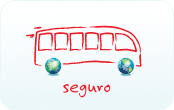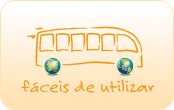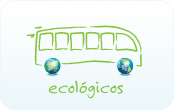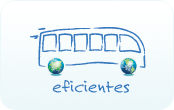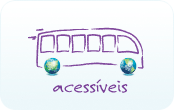| Passenger focus groups | In-depth market research helps to find out what customers desire and can be used for the customisation of transport services. One way of doing this is with passenger focus groups. Passenger focus groups consist of representative customers and moderators. Transport issues are jointly discussed, feedback is given, brainstorming is done, solutions are presented and examined and finally an agreement is reached on the most important measures to be taken. Example: Passenger focus groups are used in Berlin for receiving feedback on new mobility and travel measures which have been introduced. During numerous meetings, different stakeholders have the opportunity to express their views on initiatives Berlin is planning to realise for better and cleaner transport.
| For more information: CIVITAS in Europe, A proven framework for progress in urban mobility, p.20
http://civitas.eu/docs1/CIVITAS_D8_Final.pdf
| Satisfaction surveys | Satisfaction surveys are another way to get to know customers’ wishes. Example: Thanks to over 20 000 annual face-to-face interviews, Arriva receives feedback from its customers. As a result, Arriva prioritises areas where performance needs to improve. Consequently, measures focusing on punctuality, frequency and specifically, cleanliness and comfort, have been introduced. That is why Arriva has been initiating measures related to new interior bus design, new on-bus signage and heavy fleet investment. This new focus on customers has resulted in an overall satisfaction of 91%. | For more information: Arriva: Customer Service, Feedback is important www.route-one.net
| Direct marketing campaigns | Targeting a segment directly with marketing campaigns may result in an increase in passengers. This is mostly used with new residents and within new residential areas. Example: Through a direct marketing campaign, Stockholm targeted new inhabitants in several neighbourhood areas. The residents received printed information in their mailboxes, including information about travel possibilities, free try-out tickets and a VIP phone number for help in personal travel planning. As this campaign was successful in terms of new passengers and increased revenues, the city expanded the campaign to more than 180 000 people moving into the Stockholm region. Metrobus, which is a company operating local bus services in Greater London, Surrey, Kent, East & West Sussex was amongst the first bus companies to create a presence for itself on Facebook and to use this social networking media to advertise and communicate with current and potential passengers. Metrobus is targeting and interacting with people that conventional bus advertising might not normally reach as well as communicating with current passengers just as effectively and efficiently as with the use of traditional formats.
| For more information: Sustainable Urban Transport, Final report from the European project Trendsetter, p.39
http://www.civitas-initiative.org/docs1/CIVITAS_TRENDSETTER_Final_Policy_Report.pdf Evaluation Report, Public Transport, Trendsetter, p.29
http://213.131.156.10/xpo/bilagor/20060119170218.pdf http://www.metrobus.co.uk/ http://www.ukbusawards.org.uk/content/index.php?option=com_content&view=article&id=319&Itemid=76 | Market segmentation and customisation
| Market segmentation aims at groups of people according to demographics, behaviour, travel patterns or other factors. In many cases the segmentation of markets is an optimal response to customers’ needs. This is done through customisation of bus routes, schedules, vehicle types and much more. For example, increasing bus frequency and modifying bus routes during peak hours may attract more commuters going to work to business districts to take the bus in the morning, while pensioners using the buses during the day require more bus stops and different routings. Example: The bus route between Spondon and Derby was adapted to the needs of the majority of passengers in terms of routing. The frequency was also increased to every 10 minutes, which resulted in an increase from 6000 to 13 500 passengers per week. | For more information: Knowledge base about your (potential) customers, PROCEED, Austrian Mobility Research
http://www.fgm.at/proceed/index.phtml?id=43 Busfacts, Institut für Angewandte Wirtschaftsforschung und Regionalanalyse, p.14
| Reach for more passenger loyalty
| Image and branding are amongst the strongest marketing tools put to use for consumer products, luxury goods, countries and cities and should also play an important role for collective/public transport operators. According to “Greener Journeys” there is an 89% customer satisfaction rate on buses and coaches. This high rate is why once people start using bus and coach services, they very often continue to travel by bus and coach. Example: In Vienna, the marketing strategy of the main operator “Wiener Linien” aimed to change the association of collective/public means of transport from “one could travel” to “one desires to travel” that way. With the slogan “The city is yours” the “Wiener Linien” were even able to strengthen the image to – “one loves to travel” with them. | For more information: Greener Smarter Together, Corporate Social Responsibility Report 2009, Stagecoach group
http://www.stagecoachgroup.com/scg/media/publications/policydocs/csr2009.pdf
| |
|
|
